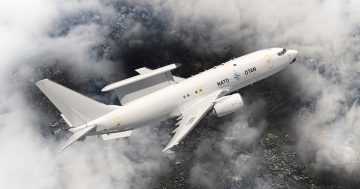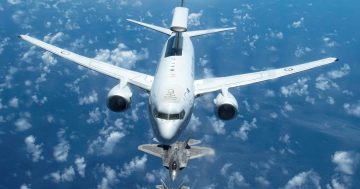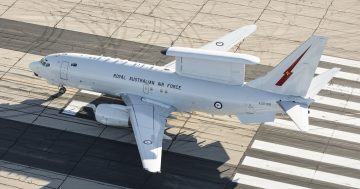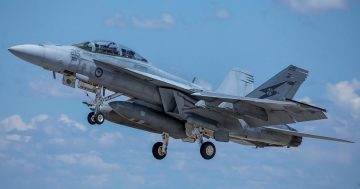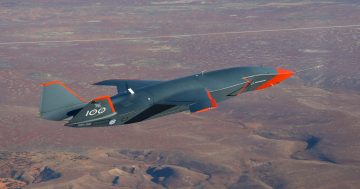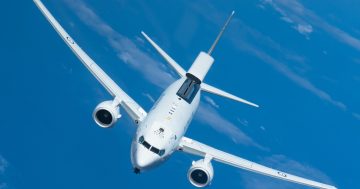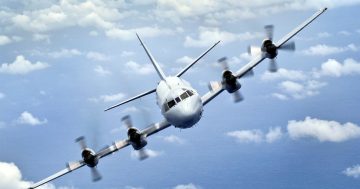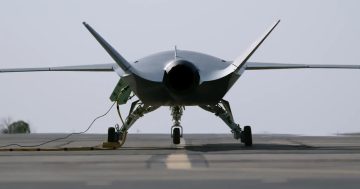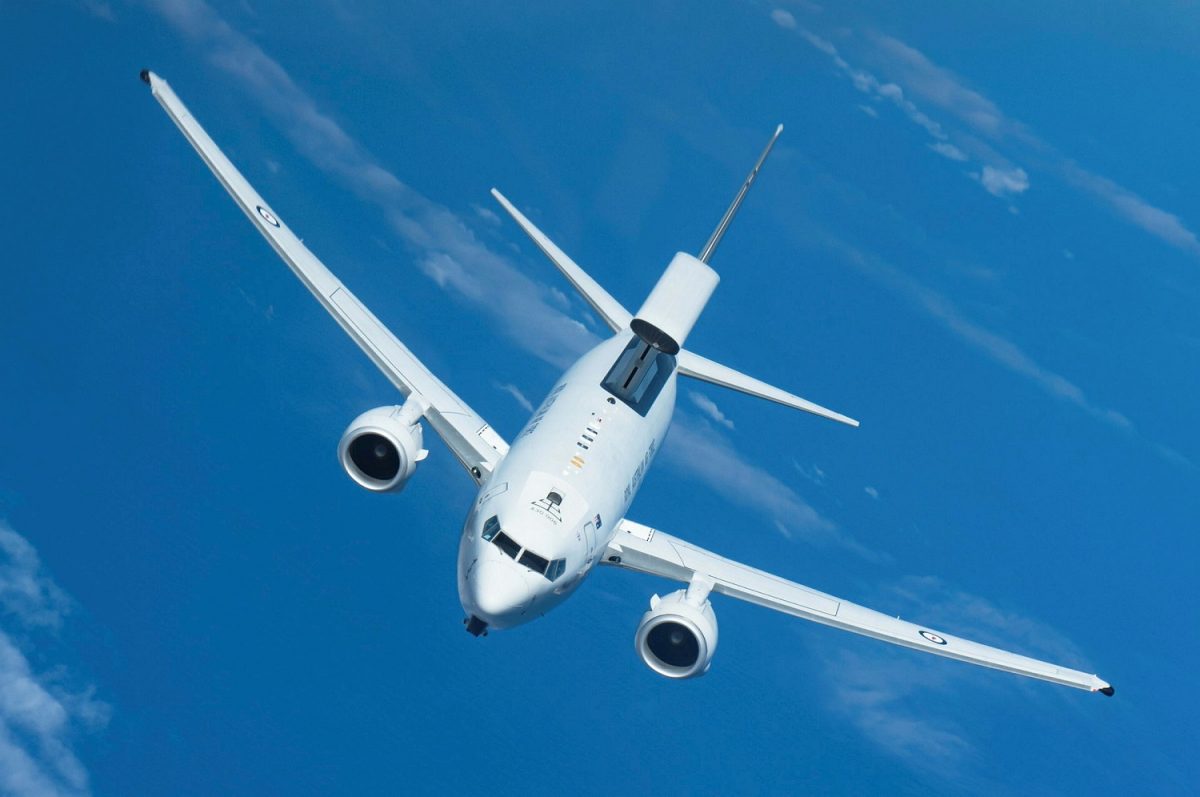
An RAAF E-7A in flight showing the numerous antennae and the upper fuselage air-to-air refuelling receptacle. Photo: ADF.
The US Air Force (USAF) has selected the Boeing E-7A Wedgetail to become its next-generation airborne command and control aircraft.
While this news may seem a world away to the average Australian, there is actually a direct link to the Royal Australian Air Force (RAAF), as the E-7A was originally developed in response to the RAAF’s ”Project Wedgetail” requirement for a new Airborne Early Warning and Control (AEW&C) aircraft.
The Wedgetail was the first of a new generation of large digital AEW&C aircraft, and was designed from the ground up to meet Australia’s needs. Not long after Australia committed to the aircraft’s development, South Korea and Turkey also joined the program with four aircraft each, while the UK ordered five in 2018.
Because of its advanced design, the Wedgetail program was delayed by about three years. The first aircraft flew in 2002 and was to have been delivered by 2006, but integration issues with the radar and the aircraft’s sophisticated electronic warfare system saw that schedule slip a couple of times to 2009.
The first two RAAF E-7As were built by Boeing in Seattle in the US, while the four others were converted from standard ”green” 737 airframes at Boeing Defence Australia’s facility at RAAF Amberley in Queensland.
The E-7A is based on a commercial Boeing 737-700 airframe, but features a large and distinct ”surfboard” radar on its rear fuselage as well as several other modifications. The radar is a fixed multi-mode electronically scanned array (MESA) unit that was developed by Northrop Grumman and, instead of spinning like conventional radar antennae, has thousands of individual transmit/review (T/R) nodes.
Whereas conventional radars refreshed every few seconds as the antenna spins, the fixed MESA allows for continuous 360-degree monitoring of all parts of the airspace around the aircraft, and can even divert power to specific parts of the antenna to electronically focus on, or ”stare”, at certain segments of airspace if required.
Rather than the 160 or so passenger seats a standard 737-700 airliner carries, the Wedgetail has about 10 side-facing consoles at which airborne radar and electronic warfare officers monitor the airspace and surface out to 300 km or beyond. The interior also has a large bank of computers, a galley, and a crew rest area for long-endurance missions.
Externally, numerous antennae are added for communications, electronic self-protection, infrared self-protection and datalinks. The engines each have an additional generator so sufficient electrical power can be produced for the MESA and computers, and an air-to-air refuelling receptacle has been added above the cockpit for long-endurance missions.
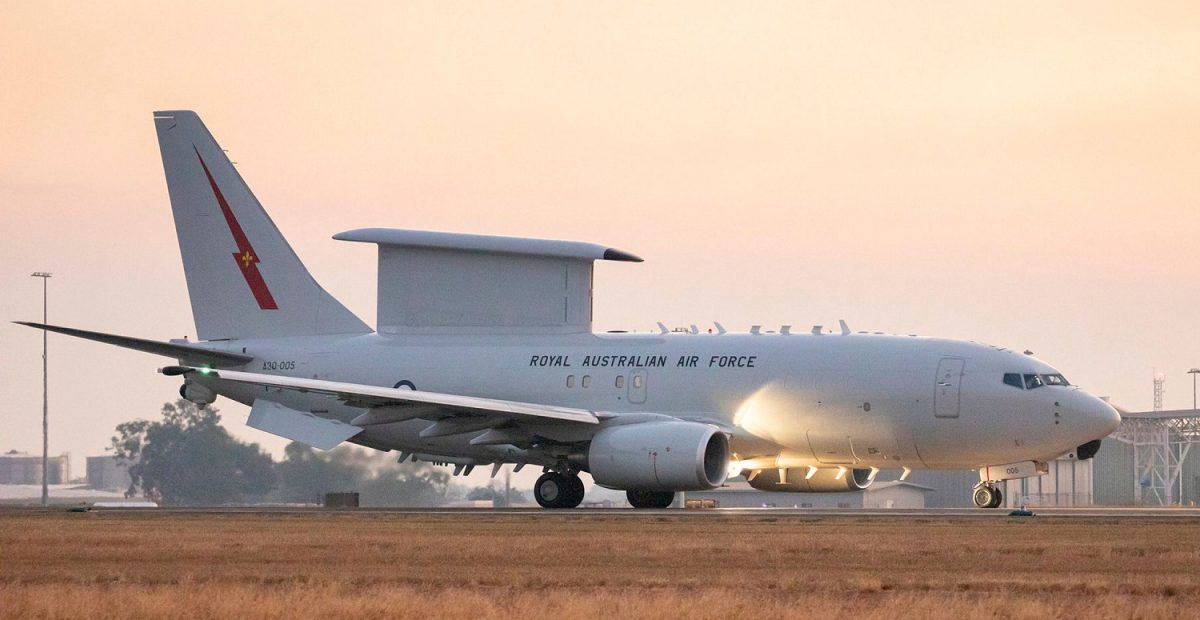
An RAAF E-7A with its distinctive ”surfboard” MESA antenna. The RAAF has six E-7As in service with No 2 Squadron based at Williamtown, near Newcastle. Photo: ADF.
The USAF currently flies about 20 ageing Boeing E-3G Sentry AWACS aircraft, which are based on the 1950s-era Boeing 707 airliner, the youngest of which was built in the early 1980s.
Despite numerous electronic upgrades over the years, the E-3Gs are difficult and expensive to support as no commercial 707s remain in operation. Therefore, spare parts are rare, and the fleet has an availability rate of less than 60 per cent. They are also much larger and use four older-generation engines than the smaller and lighter twin-engined 737-based E-7A.
By comparison, the 737 airliner is in widespread service worldwide and is still in production, and spares are expected to be available for decades to come.
As the RAAF began to incorporate its six E-7As into service, it started deploying them on major overseas exercises with US and other allied forces, and then in 2014 to the Middle East as an element of Australia’s Operation Okra commitment to the fight against ISIS. It was then that the US began to sit up and take notice of the capabilities offered by the E-7A and, after reports began filtering back from exercise partners and exchange officers, the US Congress took interest.
In February this year, the USAF awarded Boeing a $US1.2 billion ($A1.85bn) contract to begin development of its first two E-7As, with the first aircraft to be ready for operations in 2027 and an eventual requirement for 26 aircraft. USAF leadership has described the Wedgetail as a “proven capability”, one that can be developed and introduced into service relatively quickly compared with a ”clean-sheet” design.












